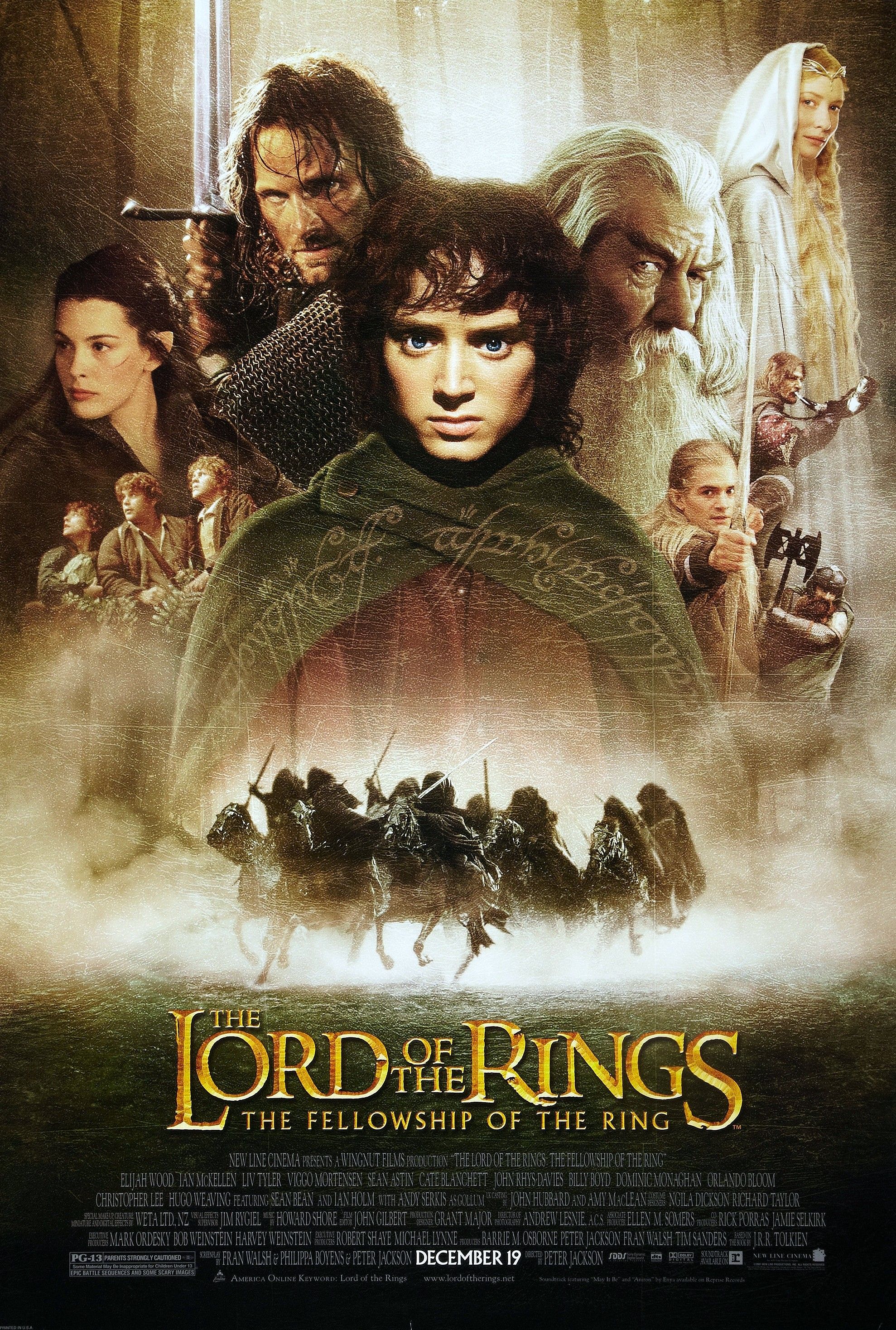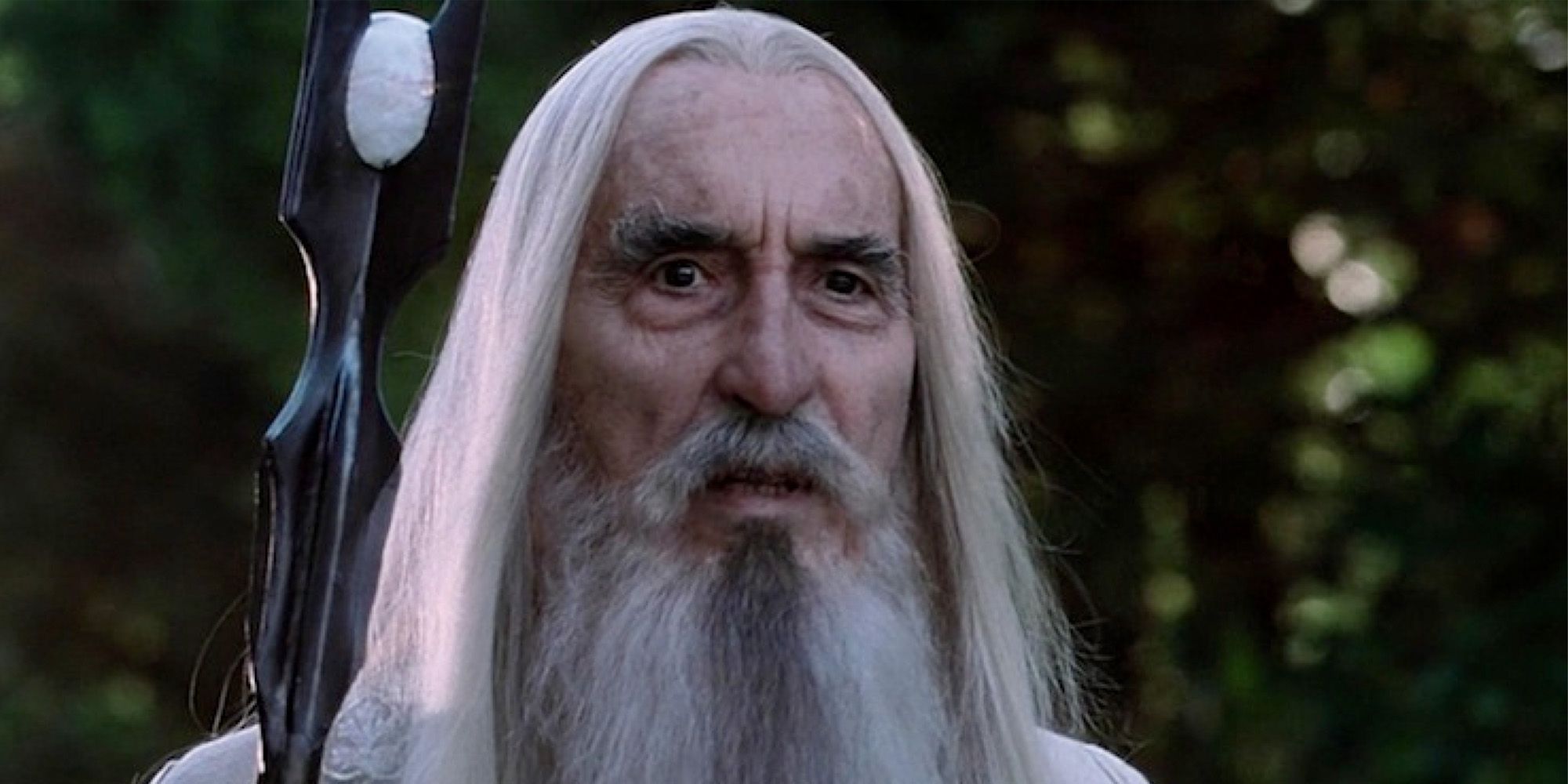The Big Picture
- Saruman was sent by the Valar to offer counsel and inspiration, but his envy of Gandalf and desire for power led to his downfall.
- Saruman pacified his allies by pretending the One Ring was lost, while secretly searching for it himself.
- In the books, Saruman was treacherous to Sauron, offering to overthrow him and ruling in his place. In the end, his plans failed.
"Leave Sauron to me." — These are the last words spoken by Saruman the White (Sir Christopher Lee) in The Hobbit: The Battle of the Five Armies. He and the other members of the White Council have expelled Sauron from his fortress of Dol Guldur in Mirkwood; Saruman’s words are a promise to finish off what’s left of the Dark Lord’s spirit. The next time we see him in The Lord of the Rings: The Fellowship of the Ring (which was really the first time, but you know how prequels are), Saruman is in Sauron’s service, so far corrupted that he imprisons Gandalf (Ian McKellen), works for the destruction of Rohan, and breeds a foul army of Uruk-hai to make war and pursue the One Ring.
How could the chief of the Istari (wizards) fall so low? The films never offer an explanation, and J.R.R Tolkien never wrote down a definite date or cause for Saruman’s corruption. But for the curious, we offer the facts that Tolkien did leave us.

The Lord of the Rings: The Fellowship of the Ring
A meek Hobbit from the Shire and eight companions set out on a journey to destroy the powerful One Ring and save Middle-earth from the Dark Lord Sauron.
- Release Date
- December 19, 2001
- Director
- Peter Jackson
- Cast
- Elijah Wood , Ian McKellen , Orlando Bloom , Sean Bean , Alan Howard , Sean Astin , Andy Serkis , Viggo Mortensen
- Runtime
- 178 minutes
- Main Genre
- Adventure
What Is Saruman's Backstory?
Saruman, like all the five wizards of Middle-earth, was a Maia, an angelic spirit of the same order of Sauron, sent by the Valar (analogous to archangels) to offer inspiration and counsel to the Free Peoples who resisted evil in the Third Age. They were to be clothed in the bodies of men, advanced in age but possessed of great physical and mental power. So embodied, they would lose a great deal of their natural power; they were not meant to exercise force nor to coerce anyone to act. They would also be subject to weariness, hunger, injury, and the risk of death. Possessed of free will, they could also be tempted away from their task.
In Unfinished Tales, a collection of essays and story fragments Tolkien left behind, the first Maia recruited for this task was Curumo. He was attached in service to the Vala Aulë, the Smith, creator of the Dwarves and the Vala whom Sauron served before his own corruption. Curumo volunteered for the responsibility, but only reluctantly accepted some of its trappings. For instance, he was bidden to bring with him Aiwendil (later Radagast the Brown). And when the Maia Olórin – later Gandalf the Grey – accepted appointment as the third emissary, it was remarked that he would in some way not be the third, a prophecy Curumo remembered.
Saruman was the first of the Istari to arrive in Middle-earth, clad in white robes with raven hair and beard that faded to white through the centuries. He became known as Curunír to the Elves and Saruman to Men. For over a thousand years, he and the Blue Wizards sojourned in the East, but he returned alone just as Sauron’s power in Dol Guldur began to grow. Saruman was, at that time, devoted to his task. In good faith, he offered to take up residence in the tower of Orthanc in Isengard and to shore up its defenses, an arrangement that pleased the King of Rohan and the Steward of Gondor both. Curunír means “Man of Skill” in the Elven Sindarin tongue, and Saruman became a master of crafts, of “metal and wheels” as Treebeard would later put it, and of the lore behind the making of Rings of Power. As chief of the Wizards, he was the most powerful among them, and he was elected the head of the White Council formed of wizards and Elves counted among the Wise who opposed Sauron.
Saruman Began Falling to His Vices
Yet even at this stage, when he still served the greater good, Saruman began falling to his vices. His reluctance to bring Aiwendil with him grew into an utter contempt for Radagast, whom he dismissed as a fool. He also came to envy Gandalf. The remarks made of Olórin by the Valar lingered with him, as did the Elf Círdan’s gift of the Ring of Fire to Gandalf and Galadriel’s favoring of Gandalf for the head of the White Council. This jealousy could manifest in rather comic ways; Unfinished Tales recounts how Saruman scorned Gandalf’s affection for hobbits and publicly disapproved of his smoking pipe-weed, but then took up the practice in secret imitation.
But Saruman’s envy led him to consider Gandalf a rival to be feared, someone who must be scheming against Saruman’s designs. And as he probed the craft of ring-making, Saruman also came to envy Sauron himself. Tolkien wrote in his private letters that the greatest temptation facing the Istari was impatience: that despite their orders, their desire to do good would lead to a desire to force good upon Middle-earth, and from there, to desire that force for its own sake. Such a power was to be found in the One Ring of Sauron. Saruman’s study of the Rings of Power included the last known location of the One Ring, and he went so far as to hinder the White Council’s plans to expel Sauron from Dol Guldur in the hope that the Ring might show itself if its master was free to search for it, giving Saruman an opportunity to claim it for his own.
This step toward evil takes place well before the events of The Hobbit, a book Saruman never appears in except for the vague mention of a council of “white wizards” that assembled to expel the Necromancer (Sauron) from Mirkwood; Saruman eventually relented in his opposition to a strike. The Hobbit films fudge the timeline so that he remains true to his task and the faithful head of the Council. Lee’s Saruman in the prequel trilogy is pompous at times, still contemptuous of Radagast and a voice of dissent against “meddling” in Mirkwood, but he has no ulterior motives beyond overconfidence. Many of the adjustments made to the Necromancer’s story in The Hobbit films don’t make a lot of sense if you stop and think about them (and just aren’t very good in their own right), but showing audiences Saruman at his best is among the few that works, and one I enjoyed seeing.
Saruman Pacifies His Unsuspecting Allies Whilst Searching for the One Ring
After Sauron’s expulsion from Dol Guldur, Saruman pacified his unsuspecting allies with claims that the One Ring is forever lost at the bottom of the sea, while continuing his own efforts to find it. He began to covet valuable treasures and goods within Orthanc and ceased his friendship with the Ents. His descent had been gradual, but his final downfall came when he presumed in his arrogance to use the palantír of Orthanc. The palantíri were the seven “Seeing Stones” of Gondor used to communicate with one another and to gaze afar in space and time. With his great will, Saruman could cast the gaze of the stone wherever he wished and gained useful knowledge. But when he turned the stone toward Bard-dûr, chief fortress of Sauron, he was ensnared by the Dark Lord – who possessed one of the palantíri himself.
The Lord of the Rings Films Fail to Convey Saruman's Treachery Against Sauron From the Books
In The Lord of the Rings films, this connection is presented as one of obedient servitude on Saruman’s part. He is completely resigned to Sauron’s victory, desires it, and loyally works to bring it about. In the books, however, Saruman was treacherous even to his new master. His offer to Gandalf was that they might overtake Sauron and rule in his place, and his men and Uruk-hai were sent out to bring the Ring to Isengard. He created his own ring and restyled himself “Saruman of Many Colors.” When his use of the palantír is discovered, Gandalf muses that Saruman was likely more cowed than he knew or would admit, more of his secret thought known to the Enemy than he realized. Gandalf’s escape forced Saruman’s hand; had he any hope of setting himself above Sauron, he needed to strike first and claim the Ring.
It all came to naught. The Ring passed beyond his reach, and his schemes for Rohan were defeated. The fine detail of Saruman’s final fate matches in book and film, but in radically different contexts. Lee’s Saruman attempts to barter for his freedom by offering Gandalf information when he is killed by his abused servant, Grima Wormtongue. In the novel, Saruman, reduced to a spiteful beggar nearly bereft of power, nevertheless enchanted his jailers to release him, whereupon he hurried to the Shire to leave it in ruins for the returning hobbit heroes. While he wreaked cruel and senseless damage upon their home, he was foiled in this too, and there meets his end at Grima’s hands. As an immortal spirit, his "death" was not as it would be for hobbits or men, and had he stayed true to his task, he would have returned to the West from whence he came. But for his sins, he was denied this. "And his spirit went wither-soever it was doomed to go," Tolkien wrote in Unfinished Tales, "and to Middle-earth, whether naked or embodied, came never back."
The Lord of the Rings trilogy is available to stream on Max in the U.S.


